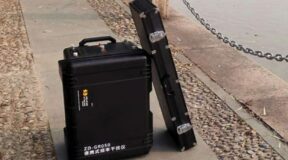In the ever-evolving world of networking, selecting the appropriate fiber transceiver standards is paramount. With an array of options available, it’s essential to make informed decisions to ensure optimal performance, scalability, and compatibility. This guest blog provides valuable insights into selecting the right standards, including SFP, SFP+, and QSFP, to meet your networking needs.
Understanding Fiber Transceiver Standards
Before diving into the specifics, it’s crucial to grasp the basics. Fiber transceivers are essential components that allow data to traverse optical fiber networks. These transceivers come in various form factors and standards to accommodate diverse networking requirements.
SFP: Small Form-Factor Pluggable
SFP, or Small Form-Factor Pluggable, is a widely used standard due to its versatility and compact size. SFP transceivers support various data rates and optical wavelengths, making them suitable for diverse applications. They are hot-swappable, meaning they can be replaced or upgraded without disrupting network operations, making them an excellent choice for networks that require flexibility and scalability.
SFP+: The Enhanced Version
For networks demanding higher bandwidth and faster data transmission, SFP+ (Small Form-Factor Pluggable Plus) is the go-to choice. SFP+ transceivers offer data rates of 10 Gbps and beyond, making them ideal for data-intensive tasks like data center interconnects and high-speed connections between switches and routers. These transceivers retain the same compact form factor as SFP, ensuring seamless compatibility with SFP slots.
QSFP: The High-Performance Solution
When it comes to ultra-high-speed networking, QSFP (Quad Small Form-Factor Pluggable) transceivers take center stage. With four channels for transmitting and receiving data, QSFP can provide data rates of 40 Gbps, 100 Gbps, or even 400 Gbps. These transceivers are the backbone of modern data centers, enabling lightning-fast communication between servers and storage arrays.
Factors to Consider
Choosing the right fiber transceiver standard depends on several factors:
- Data Rate Requirements: Assess your network’s current and future data rate needs. SFP is suitable for lower-speed connections, while SFP+ and QSFP are designed for higher-speed networks.
- Compatibility: Ensure your chosen transceiver is compatible with your existing hardware, such as switches, routers, and optical fiber types.
- Distance: Consider the distance data needs to travel. Some transceivers are optimized for short-range connections, while others are designed for long-haul applications.
- Cost: Evaluate your budget constraints and balance them with performance requirements.

If you’re looking for fiber transceivers, then Fibermart should be your go-to option for it. The company is one of the best manufacturers and suppliers of fiber optic network solutions and offer a wide range of products. This includes DWDM modules, MPO Trunk cables, optical amplifiers, Fiber Breakout cables, and more. Contact them today and get your hands on the best fiber transceivers in the market.






